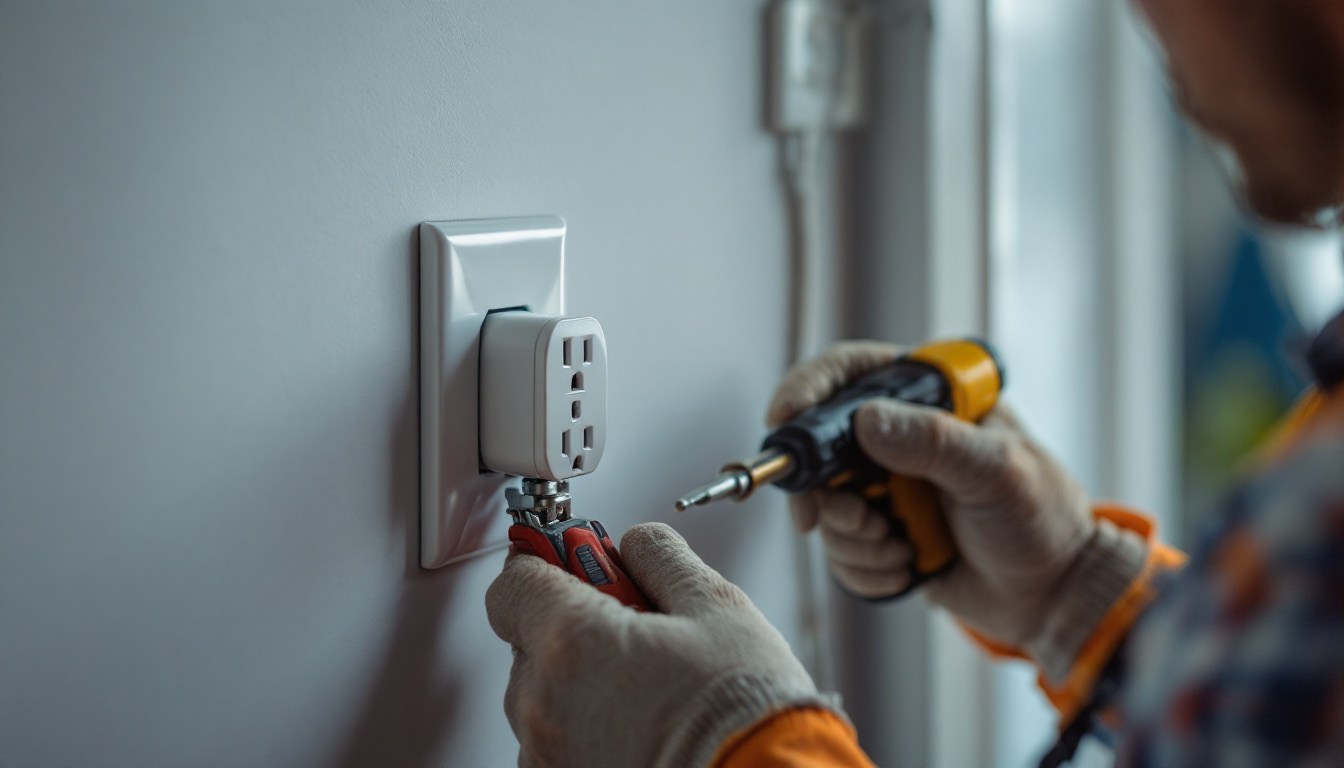

In the world of electrical installations, particularly in lighting, safety and reliability are paramount. One of the essential components that contribute to this is the locking electrical outlet plug. This article delves into the best practices for lighting contractors when it comes to using locking electrical outlet plugs, ensuring both efficiency and safety in their projects.
Locking electrical outlet plugs are designed to provide a secure connection between the plug and the outlet. Unlike standard plugs, which can easily be pulled out, locking plugs engage with a mechanism that prevents accidental disconnection. This feature is particularly beneficial in environments where equipment is frequently moved or where vibrations may cause loose connections.
There are various types of locking plugs available, each designed for specific applications. Common types include NEMA L5, L6, and L14 plugs, which are used for different voltage and current ratings. Understanding the specifications of each type is crucial for lighting contractors to ensure compatibility with their equipment and to meet local electrical codes.
When selecting a locking plug, consider the environment in which it will be used. For instance, outdoor applications may require weatherproof designs, while industrial settings might necessitate heavy-duty options. Familiarity with these types can help contractors choose the right plug for their projects. Additionally, some locking plugs come with features such as built-in circuit breakers or surge protection, which can further enhance safety and reliability in demanding environments.
The primary benefit of using locking plugs is the enhanced safety they provide. By preventing accidental disconnection, they reduce the risk of electrical shocks and equipment damage. This is particularly important in high-traffic areas or locations where equipment is frequently moved.
Furthermore, locking plugs can improve the reliability of electrical connections. In lighting installations, where consistent power supply is critical, these plugs help maintain a stable connection, ensuring that lights function as intended without interruptions. In addition to these practical advantages, the use of locking plugs can also lead to cost savings over time. By reducing the frequency of equipment failures and the associated downtime, businesses can maintain productivity and avoid costly repairs or replacements.
Moreover, the design of locking plugs often incorporates durable materials that can withstand harsh conditions, making them ideal for use in construction sites, outdoor events, or manufacturing facilities. Their robust construction not only enhances their longevity but also provides peace of mind to users who rely on them for critical operations. As industries continue to evolve and demand more reliable electrical solutions, the adoption of locking plugs is likely to increase, further solidifying their role in modern electrical systems.
When installing locking electrical outlet plugs, following best practices can significantly enhance safety and performance. Proper installation not only ensures compliance with electrical codes but also prolongs the lifespan of the equipment being used.
Before installation, it’s essential to choose the right location for the outlet. Consider factors such as accessibility, potential exposure to moisture, and proximity to power sources. Outlets should be installed in locations that allow for easy access while minimizing the risk of damage from environmental factors.
Additionally, ensure that the chosen location adheres to local electrical codes. This may include specific requirements for height, spacing, and protection against physical damage. Consulting the National Electrical Code (NEC) or local regulations can provide valuable guidance. It’s also wise to consider the layout of the space—outlets should be positioned to avoid clutter and facilitate the use of equipment without the risk of tripping hazards or accidental disconnections.
Wiring techniques play a crucial role in the performance of locking plugs. Always ensure that the wiring is done according to the manufacturer’s specifications and local electrical codes. Use appropriate wire gauges for the amperage and voltage of the circuit to prevent overheating and potential hazards.
When connecting wires to the locking plug, ensure that the connections are secure and that there are no exposed wires. Utilizing wire connectors and heat shrink tubing can provide additional protection against moisture and mechanical damage, enhancing the overall safety of the installation. Furthermore, it is beneficial to label the wires during installation to simplify future maintenance and troubleshooting, ensuring that anyone who works on the system can easily identify the connections without confusion.
After installation, testing the locking outlet plug is a critical step that should not be overlooked. Use a multimeter to verify that the outlet is wired correctly and that there are no shorts or open circuits. Testing ensures that the outlet is safe for use and that it will function reliably under load.
Additionally, it is advisable to perform regular inspections of the plugs and outlets during routine maintenance. Look for signs of wear, corrosion, or damage that could compromise safety. Early detection of issues can prevent more significant problems down the line. Implementing a routine testing schedule, perhaps every six months, can help maintain optimal performance and safety standards. This proactive approach not only safeguards against potential hazards but also reinforces the reliability of your electrical system, ensuring that it meets the demands of daily use without interruption.
Proper maintenance of locking electrical outlet plugs is essential for ensuring their longevity and performance. Regular care can help prevent failures and enhance the safety of electrical installations.
Conducting regular inspections of locking plugs and outlets is vital. Look for signs of wear, such as frayed wires, discoloration, or physical damage. Any issues should be addressed immediately to prevent accidents or equipment failure.
During inspections, also check for proper engagement of the locking mechanism. If the plug does not lock securely, it may need to be replaced to ensure safety and reliability. Keeping a maintenance log can help track inspections and identify patterns that may require attention.
In addition to visual checks, it is advisable to perform functional tests on the locking mechanisms. This can include plugging and unplugging the device several times to ensure that the locking feature operates smoothly. If any resistance or unusual sounds are noted during this process, further investigation is warranted. Regular testing can help catch potential issues before they escalate into more significant problems, ensuring that the equipment remains safe and operational.
Keeping locking plugs clean is another aspect of maintenance that should not be overlooked. Dust, dirt, and moisture can accumulate, potentially affecting the performance of the plug. Use a soft, dry cloth to wipe down the plugs and outlets regularly.
For outdoor or industrial applications, consider the environmental factors that may affect the plugs. Ensure that weatherproof covers are used when plugs are not in use, and take precautions to protect them from harsh conditions. This proactive approach can significantly extend the lifespan of the equipment.
Moreover, it’s important to assess the surrounding environment for potential hazards that could impact the integrity of the locking plugs. For instance, areas with high humidity or exposure to chemicals may require more frequent cleaning and inspections. Implementing a routine that includes checking for corrosion or chemical damage can help maintain the functionality of the plugs. Additionally, consider using protective coatings or sealants designed for electrical components to further safeguard against environmental wear and tear, ensuring that the locking plugs remain in optimal condition for years to come.
Safety is a top priority for lighting contractors when working with electrical installations. Locking electrical outlet plugs, while safer than standard plugs, still require careful handling and adherence to safety protocols.
When working with electrical systems, wearing appropriate personal protective equipment (PPE) is essential. This may include insulated gloves, safety goggles, and hard hats, depending on the environment. PPE helps protect contractors from electrical shocks and other hazards associated with electrical work.
Additionally, ensure that all team members are trained in electrical safety practices. This training should cover the proper use of tools, recognition of hazards, and emergency response procedures. A well-informed team is better equipped to handle potential risks safely.
Having a plan in place for emergencies is crucial when working with electrical installations. Contractors should be familiar with emergency shut-off procedures and ensure that all team members know how to respond in case of an electrical incident.
Keep first aid kits readily available on-site, and ensure that team members are trained in basic first aid and CPR. In case of an electrical shock or other emergencies, quick action can save lives and minimize injuries.
Locking electrical outlet plugs are an invaluable tool for lighting contractors, providing enhanced safety and reliability in electrical installations. By understanding the types of locking plugs, following best practices for installation and maintenance, and prioritizing safety, contractors can ensure successful project outcomes.
As the industry evolves, staying informed about the latest technologies and best practices will further enhance the effectiveness of electrical installations. By adopting these best practices, lighting contractors can not only improve their work quality but also contribute to a safer working environment for themselves and their clients.
Incorporating locking electrical outlet plugs into projects is a step toward greater professionalism and safety in the electrical contracting field. By prioritizing these practices, contractors can build a reputation for quality and reliability, ultimately leading to greater client satisfaction and business success.
Ready to elevate your lighting installations with the safety and reliability of locking electrical outlet plugs? Look no further than LumenWholesale for all your lighting needs. Our extensive selection of spec-grade lighting products ensures you have access to the highest quality at wholesale prices. Say goodbye to middleman markups and hello to cost-effective, high-performance lighting solutions. Plus, with free shipping on bulk orders, you can stock up on premium lighting without the worry of hidden fees. Don’t compromise on quality or value—visit LumenWholesale today and experience the best in wholesale lighting at the best value.

Discover the ultimate guide to outdoor wall mounted solar lanterns, exploring their benefits, installation tips, and design options to enhance your home’s exterior lighting sustainably and stylishly..

Discover why purchasing strip lights in bulk from local distributors might not be the best choice.

Explore how Securitying Lights are revolutionizing modern lighting solutions with advanced technology, energy efficiency, and enhanced safety features.

Illuminate your projects with our comprehensive guide on outdoor LED lamps, tailored specifically for lighting contractors.
Get notified when NEW deals are released.
Optimize your budget with wholesale discounts.
Only top-quality, specification-grade lighting products.
No additional costs at checkout - what you see is what you pay.
We understand the unique needs of contractors.